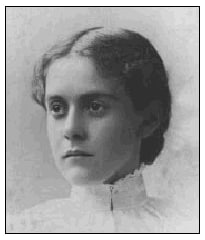 |
|
|
|
|
|
|
| ||||||||||
|
|
|
|
|
|
|
||||
| ||||||||||
|
|
|
|
|
Persons using assistive technology might not be able to fully access information in this file. For assistance, please send e-mail to: mmwrq@cdc.gov. Type 508 Accommodation and the title of the report in the subject line of e-mail. Alice Hamilton, M.D.
Alice Hamilton (February 27, 1869–September 22, 1970) was the first U.S. physician to devote herself to research in industrial medicine. Born into a prominent family in Indiana (her sister was the well-known classicist Edith Hamilton), Alice graduated from medical school at the University of Michigan in 1893. After accepting a teaching position at the Women’s Medical School of Northwestern University in 1897, she moved into Jane Addams’ Hull House in Chicago. There she opened a well-baby clinic for poor families in the local settlement house neighborhood. As she acquainted herself with the families in the neighborhood, she learned of their pains, strange deaths, lead palsy, and "wrist drop," and of the high numbers of widows. Encouraged by the reformers of Hull House, she began to apply her medical knowledge to these problems. Dr. Hamilton realized that little was written or understood about occupational illnesses in the United States. In 1908, she published her first article about occupational diseases in this country and was soon a recognized expert on the topic. Starting in 1910, initially under the aegis of a commission of the State of Illinois, and later the Federal Bureau of Labor Statistics, she explored occupational disorders and their social consequences. Relying primarily on "shoe leather epidemiology" and the emerging laboratory science of toxicology, she pioneered occupational epidemiology and industrial hygiene in the United States. Her findings were so scientifically persuasive that they caused sweeping reforms, both voluntary and regulatory, to improve the health of workers. Investigations for which she is best known include carbon monoxide poisoning in steelworkers, mercury poisoning in hatters, and "dead fingers" syndrome among laborers using jackhammers. In her field investigations, she applied precepts of scientific integrity and prudent public health practice that continue to influence the discipline of occupational health. These include the necessity for a strict definition of the disease problem, a thorough understanding of the industrial processes involved, and on-the-spot reporting of findings and recommendations. In 1919, Dr. Hamilton was appointed Assistant Professor of Industrial Medicine at Harvard Medical School, the first woman to be on the faculty of Harvard University. While there, she served two terms on the Health Committee of the League of Nations. When she retired from Harvard at age 66 years, she became a consultant to the U.S. Division of Labor Standards and served as the president of the National Consumers League. Today, at the laboratory that bears her name in Cincinnati, Ohio, and at other facilities, researchers of CDC’s National Institute for Occupational Safety and Health still explore the "dangerous trades." Alice Hamilton was a physician, scientist, humanitarian, and undisputed leader in the social reform movement of the 20th century. BibliographyGottlieb R. Forcing the spring: the transformation of the American environmental movement. Washington, DC: Island Press, 1993. Hamilton A. Exploring the dangerous trades: the autobiography of Alice Hamilton, MD. Boston: Little, Brown, 1943. Hamilton A. Industrial diseases: with special reference to the trades in which women are employed. Charities and the Commons 1908;20:655–8. Rom WN. The discipline of environmental and occupational medicine. In: Rom WN, ed. Environmental and occupational medicine. Boston: Little, Brown, 1983:4. Sellers CC. Hazards of the job: from industrial disease to environmental health science. Chapel Hill, North Carolina: University of North Carolina Press, 1997. Sicherman B. Alice Hamilton, a life in letters. Cambridge, Massachusetts: Harvard University Press, 1984:4. Disclaimer All MMWR HTML versions of articles are electronic conversions from ASCII text into HTML. This conversion may have resulted in character translation or format errors in the HTML version. Users should not rely on this HTML document, but are referred to the electronic PDF version and/or the original MMWR paper copy for the official text, figures, and tables. An original paper copy of this issue can be obtained from the Superintendent of Documents, U.S. Government Printing Office (GPO), Washington, DC 20402-9371; telephone: (202) 512-1800. Contact GPO for current prices. **Questions or messages regarding errors in formatting should be addressed to mmwrq@cdc.gov.Page converted: 6/10/99 |
|||||||||
This page last reviewed 5/2/01
|